Submitted by WA Contents
NOARQ designs smooth curvy-roof for Portuguese house to adapt to topography and create courtyards
Portugal Architecture News - Jan 24, 2018 - 04:05 24860 views
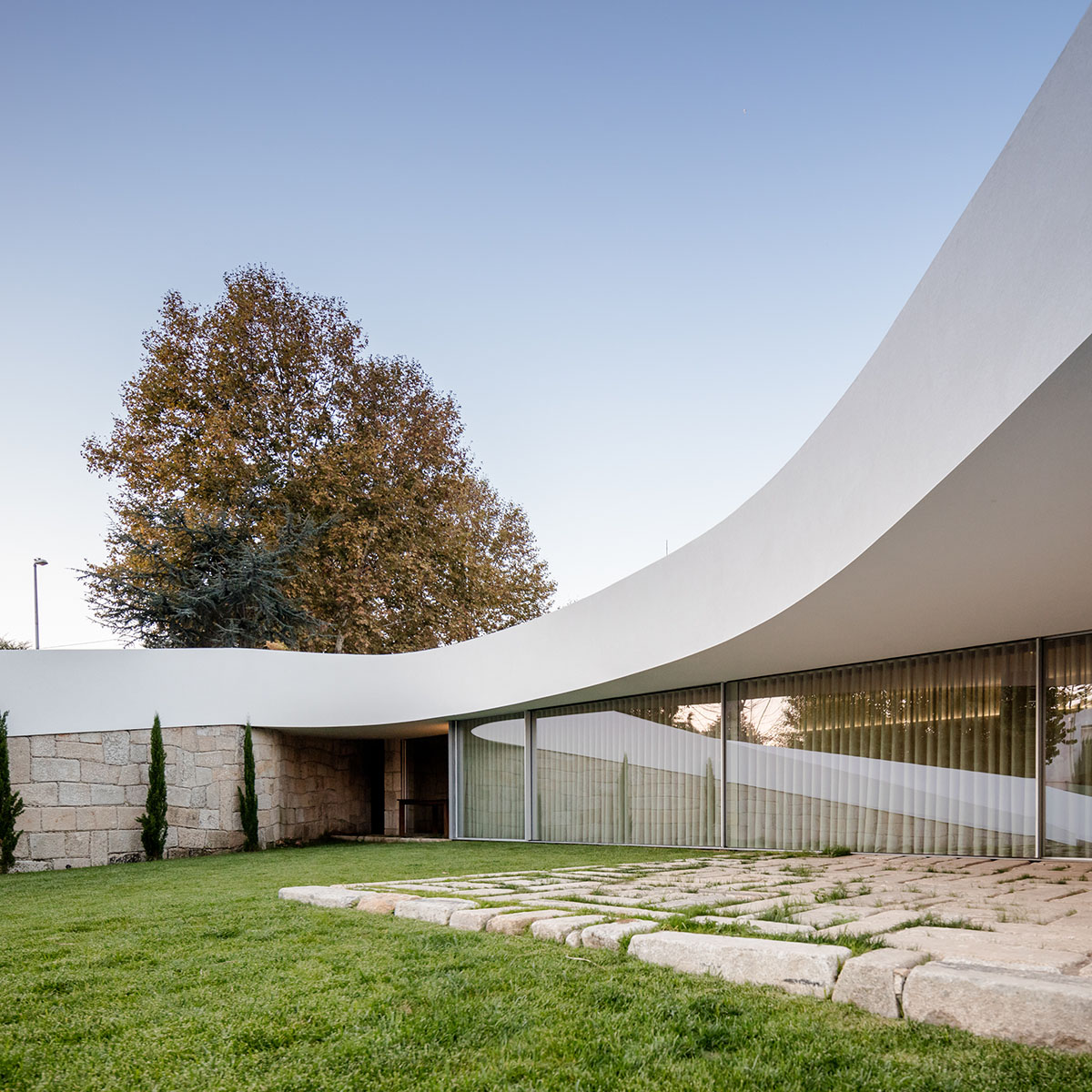
Smooth curvy roof a Portuguese house wraps the whole house along with the existing topography, which gives a shape to the Casa ED&JO house in Famalicão, Portugal.
Designed by Portugal-based architecture firm NOARQ, this one-story private house was designed to renovate the existing single-family dwelling with a much more contemporary look and to create flexible spaces in the centre of Vila Nova de Famalicão, a town and municipality in the district of Braga, in the north of Portugal.
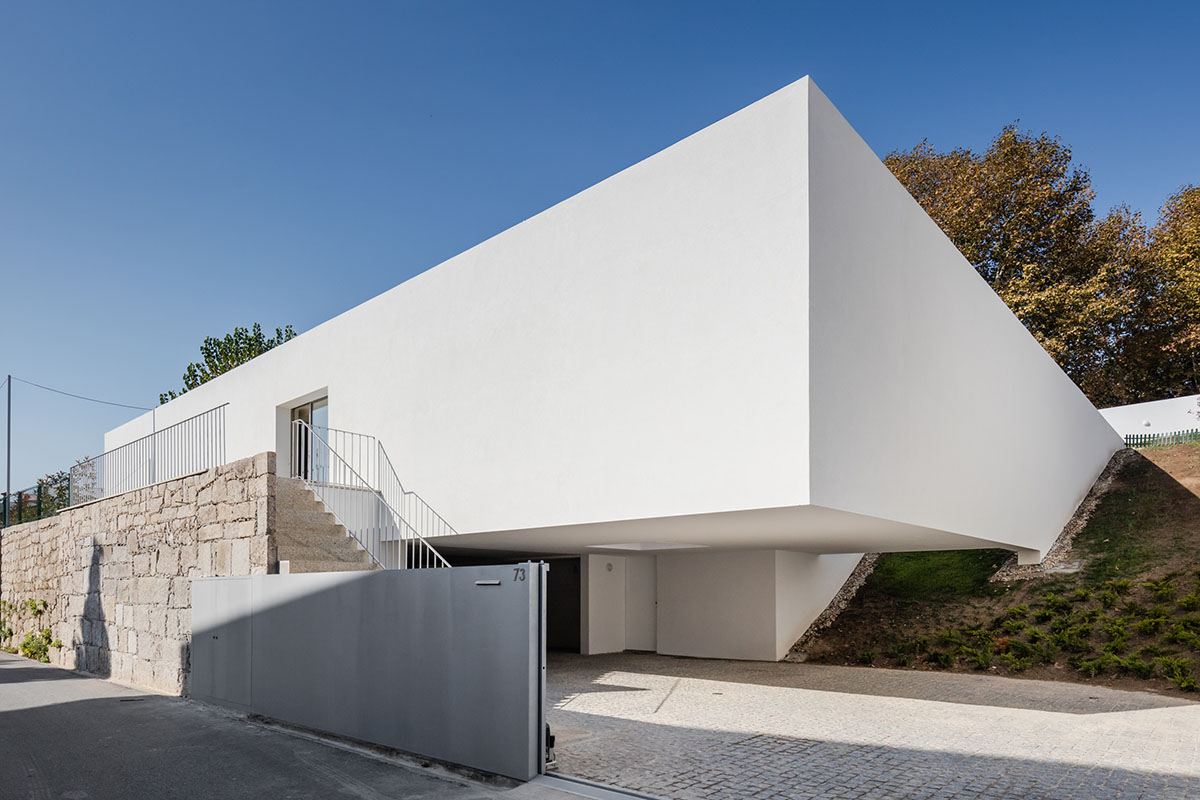
Recently captured by architectural photographer Joao Morgado, the photographer shows how the single-storey building is integrated with the topography in harmony and even makes itself invisible within the city fabric with its clean and simplistic volume.
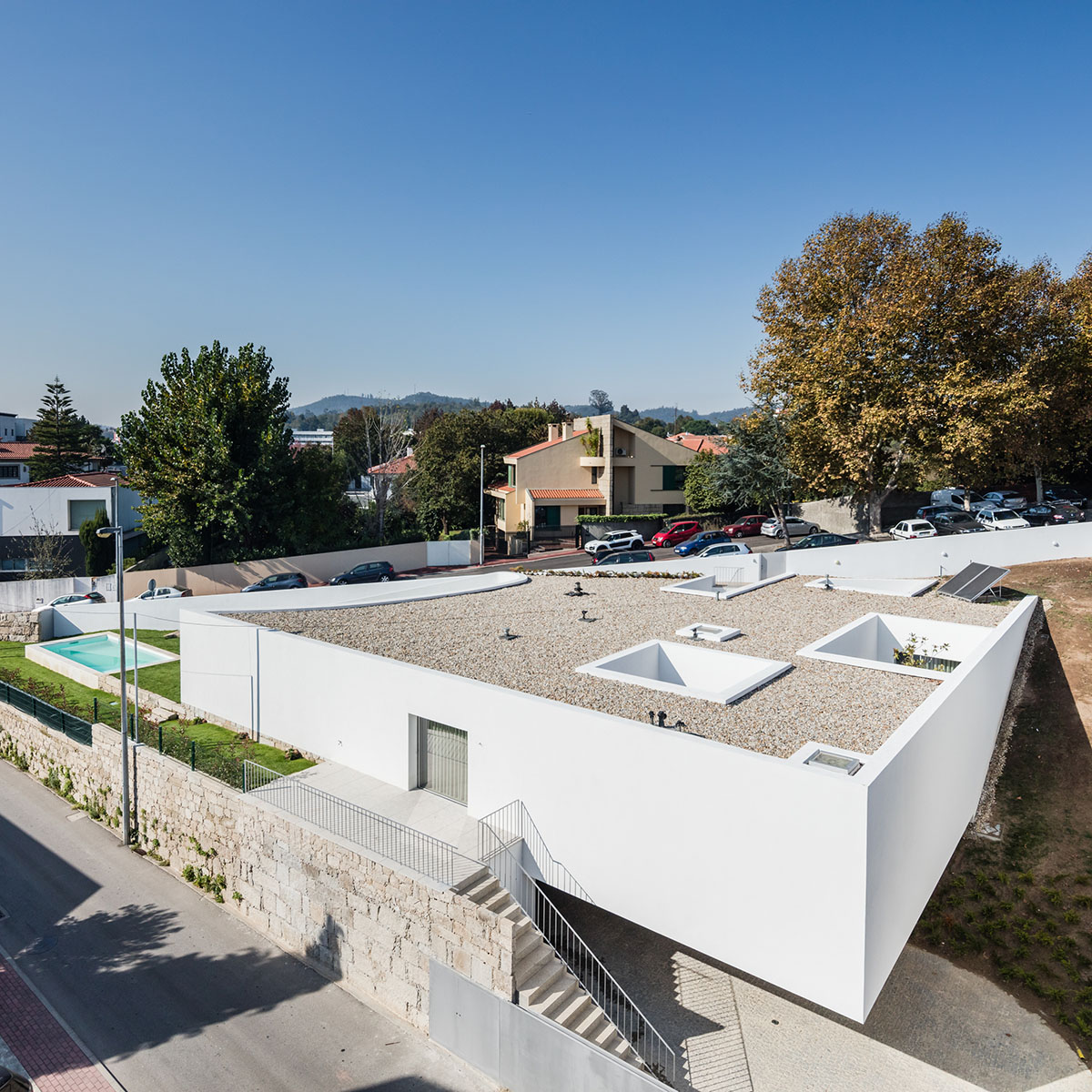
Encompassing a total of 408,9-square-metre area, the building sits on a triangular urban plot of land, covering an area of 940,8 square meters.
The topography includes a 7.60 m slope down from west to east, so the elevations in the corner converge with those on the surrounding roads.
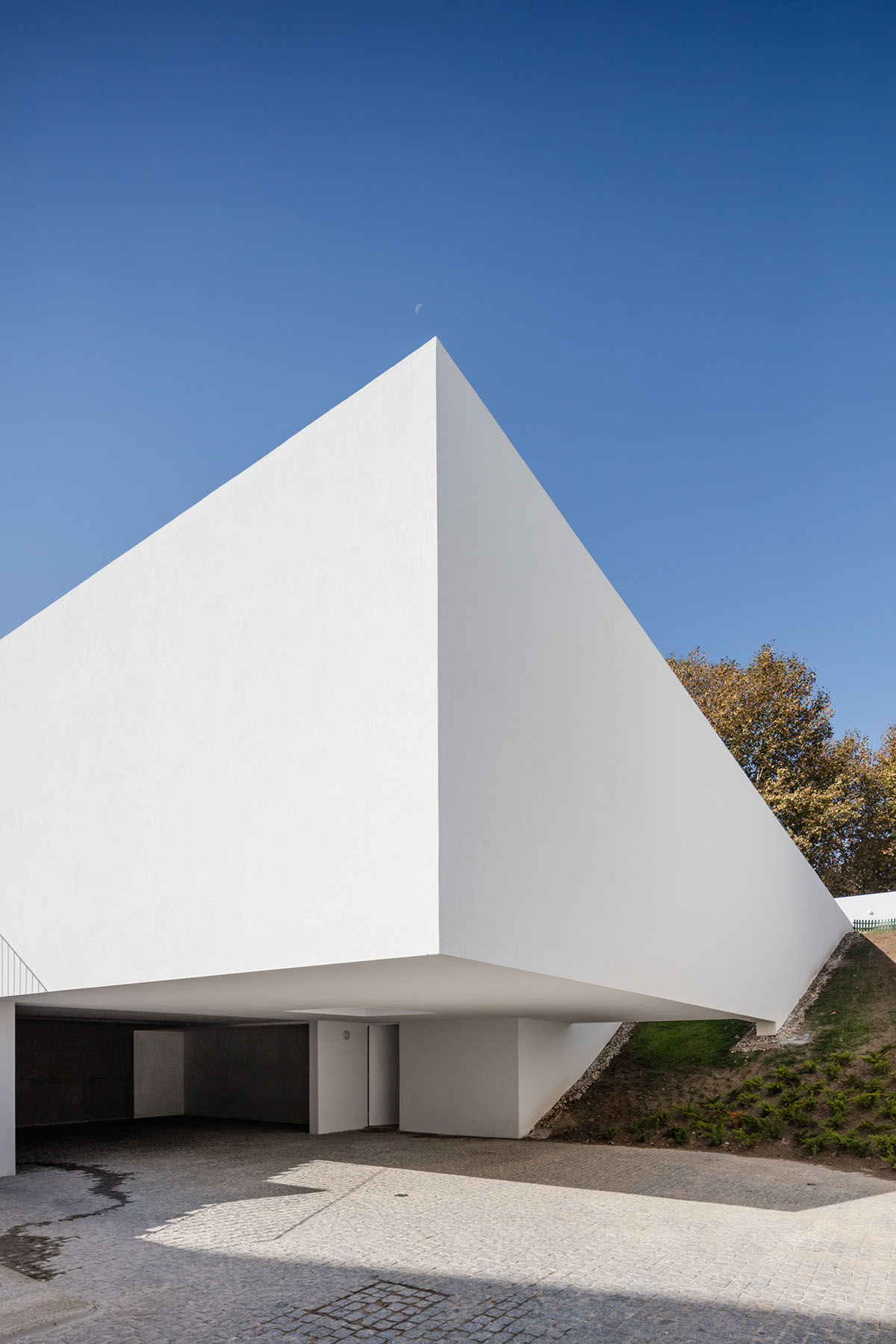
"The building on the site was of poor quality. Everything was demolished apart from the garage, below the elevation of the patio with level access from the road at the lower level," said NOARQ.
"The surrounding walls also held back the earth, below the street level to the west and above street level to the east," added the studio.

The house has a 367, 20-square-metre footprint and is designed in only two floors - a ground floor and basement floor for atrium, car parking and storeroom.
The garage section of the house is raised from the ground to provide easy access for cars and the house owners and visitors can access the house via outdoor stairs.

The basement floor, covering a 99,3-square-metre space, was rehabilitated and expanded, but the architect preserved the garage, entrance, vertical access and storage area.
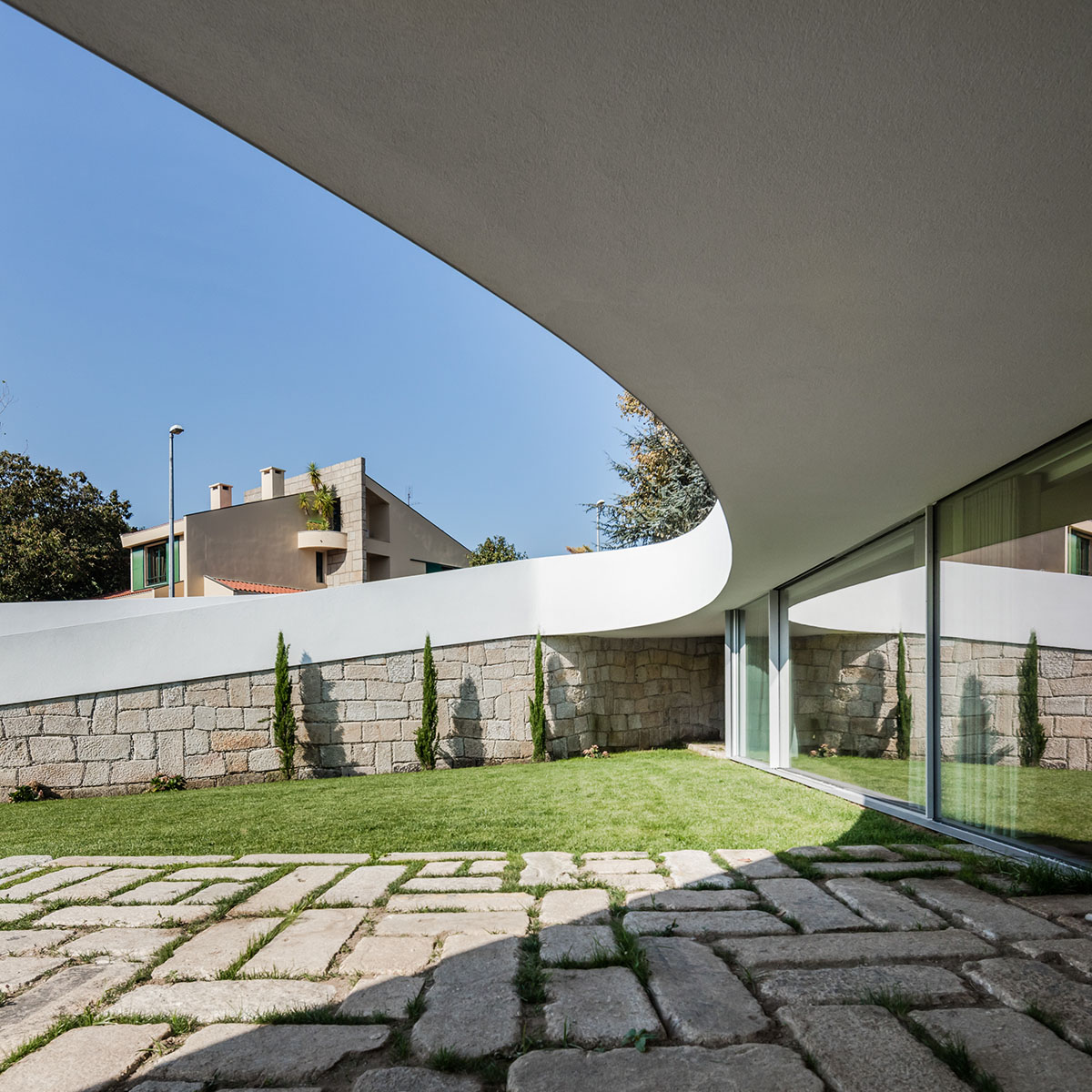
The first floor, at the level of the interior of the plot, covering a 309, 6-square-metre area, and this is where the main structure of the house is - includes service area, social zone and reserved zone, like bedrooms.The land is highly exposed because of the different topographies between the adjoining streets.

"This is why the house sits 1 m from the western boundary, below the street and does not show any wall or elevation. It is closed to the north for urbanistic and thermal reasons," added the firm.
"This is also why the house is open to the east where light enters the kitchen and the whole of the south-facing front is open under a curved shade cover."
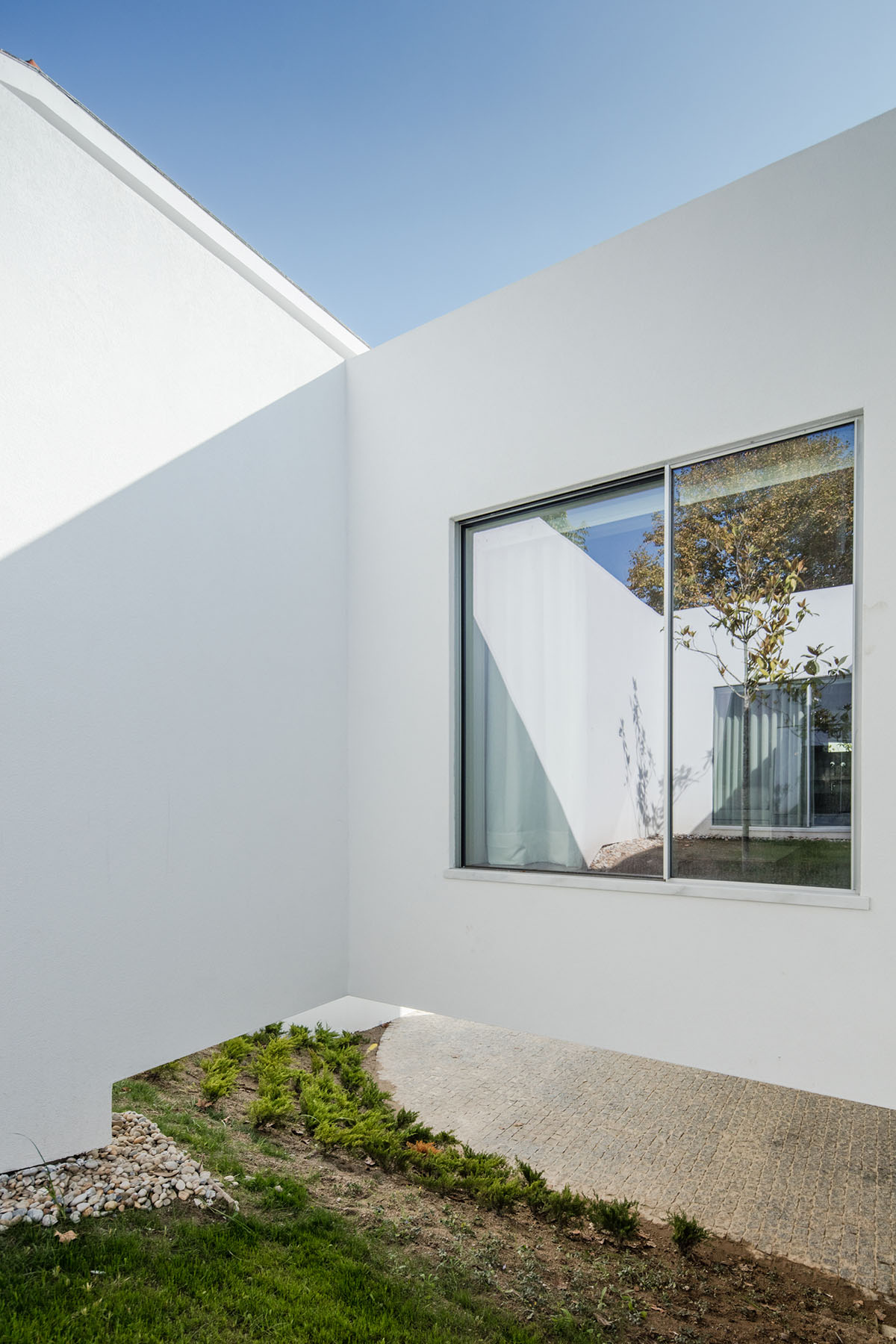
The illumination of the other rooms comes from small patios cut out of the volume. Patio 1: allows access from Rua Vieira da Silva – Patio 2: illuminates the dressing room and the bathroom attached to the main bedroom – Patio 3: illuminates the 3 bedrooms – Patio 4 is used for service, illuminates the kitchen and laundry.
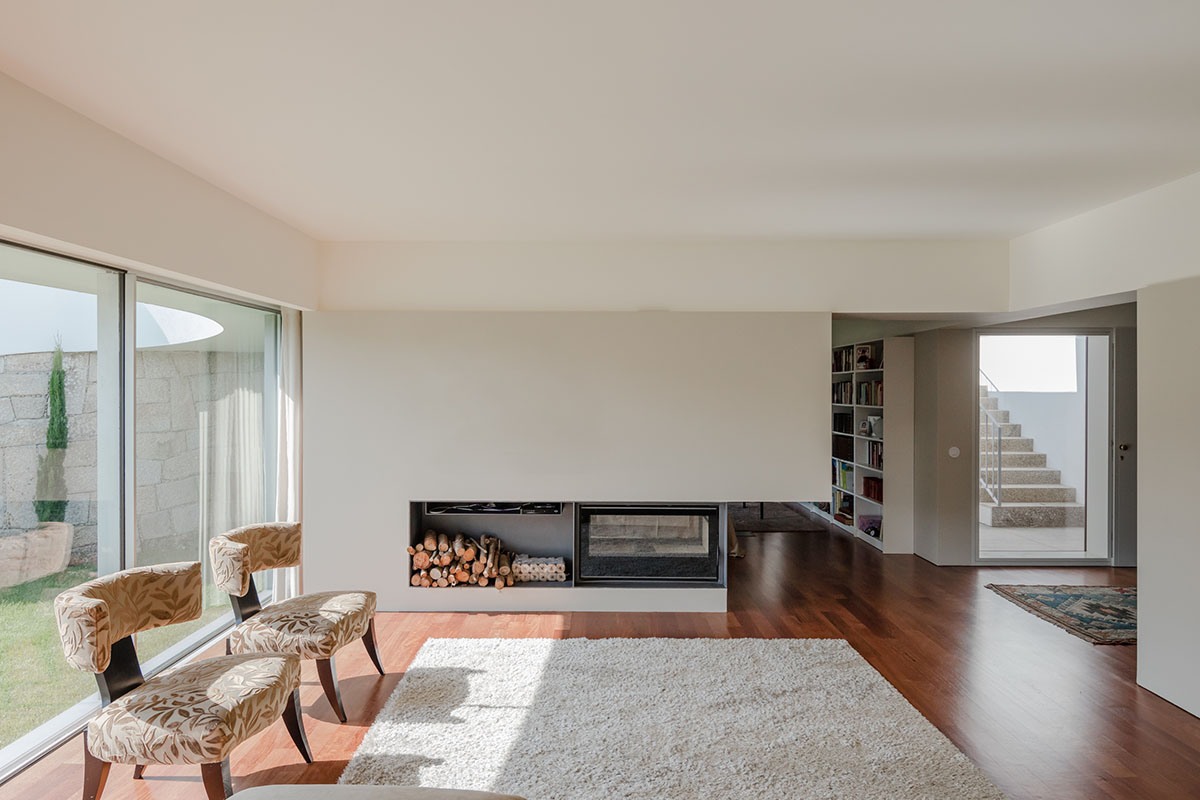
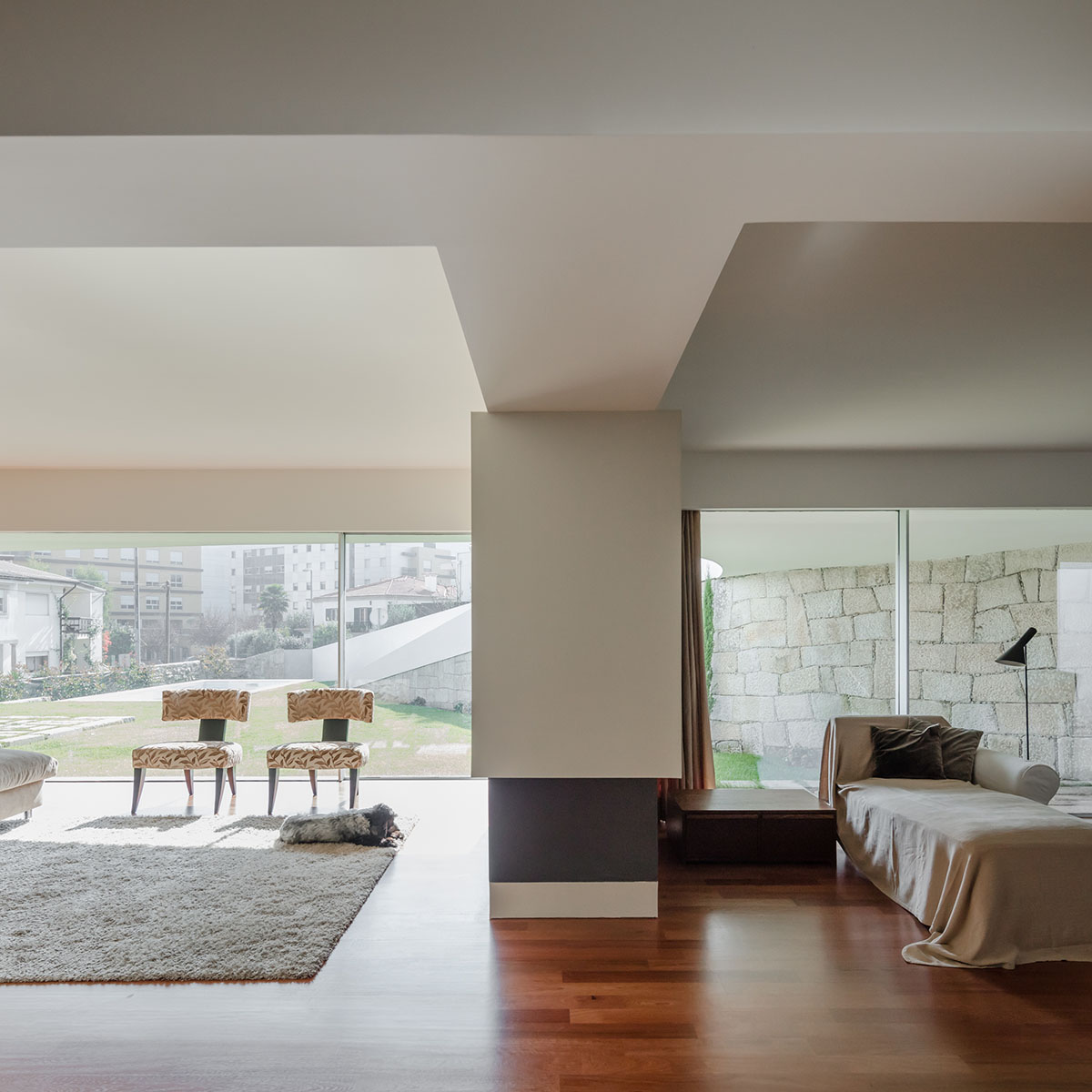
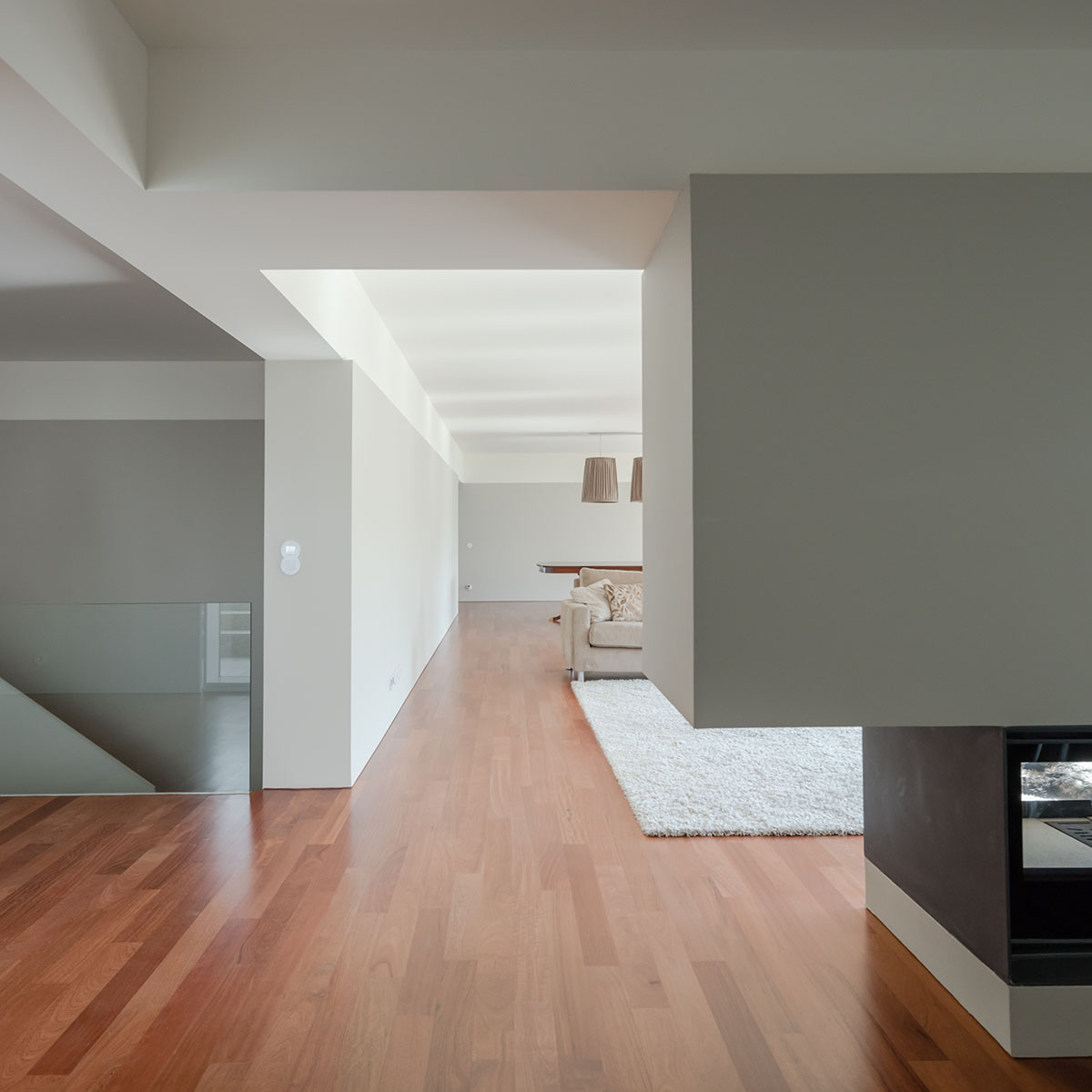
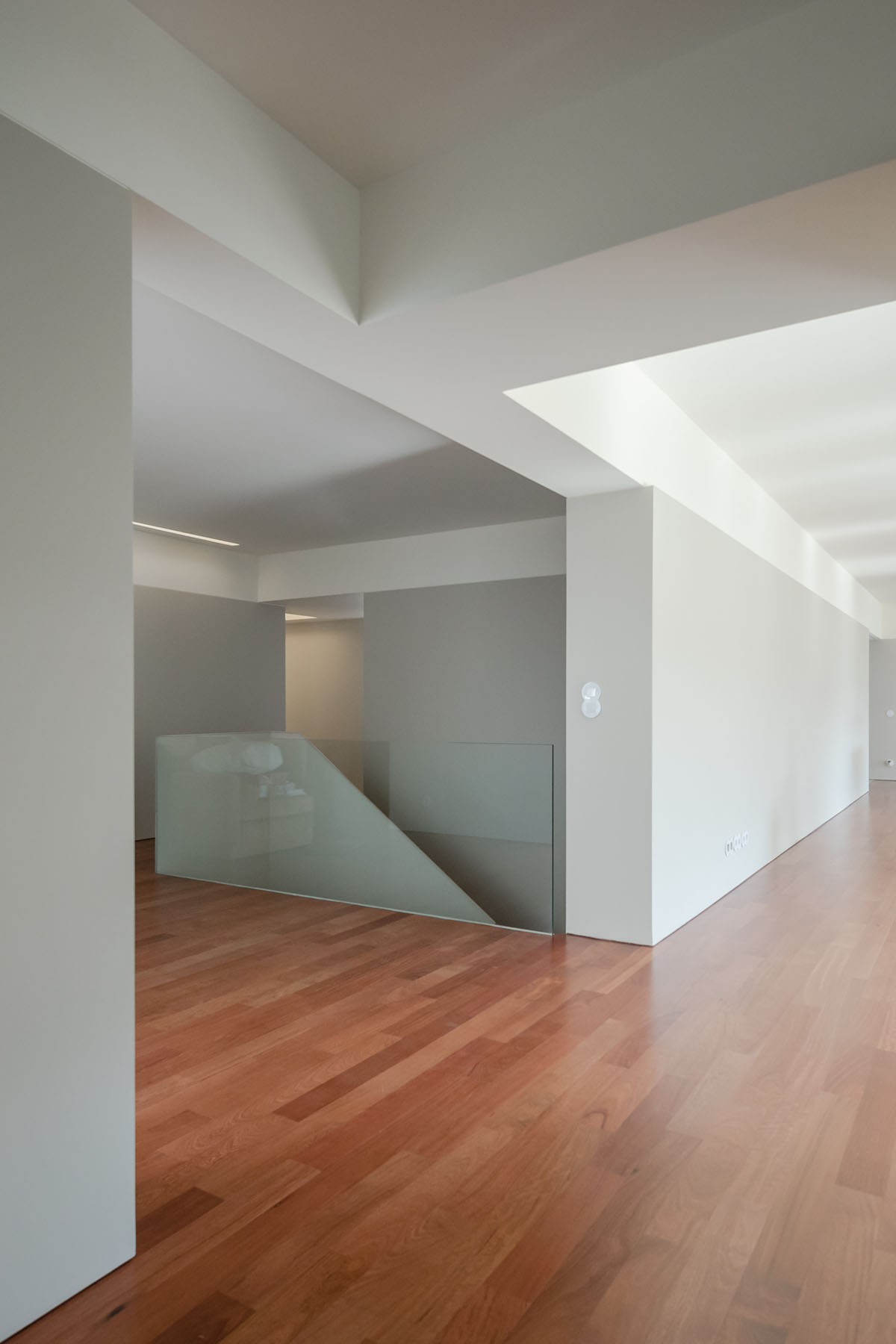



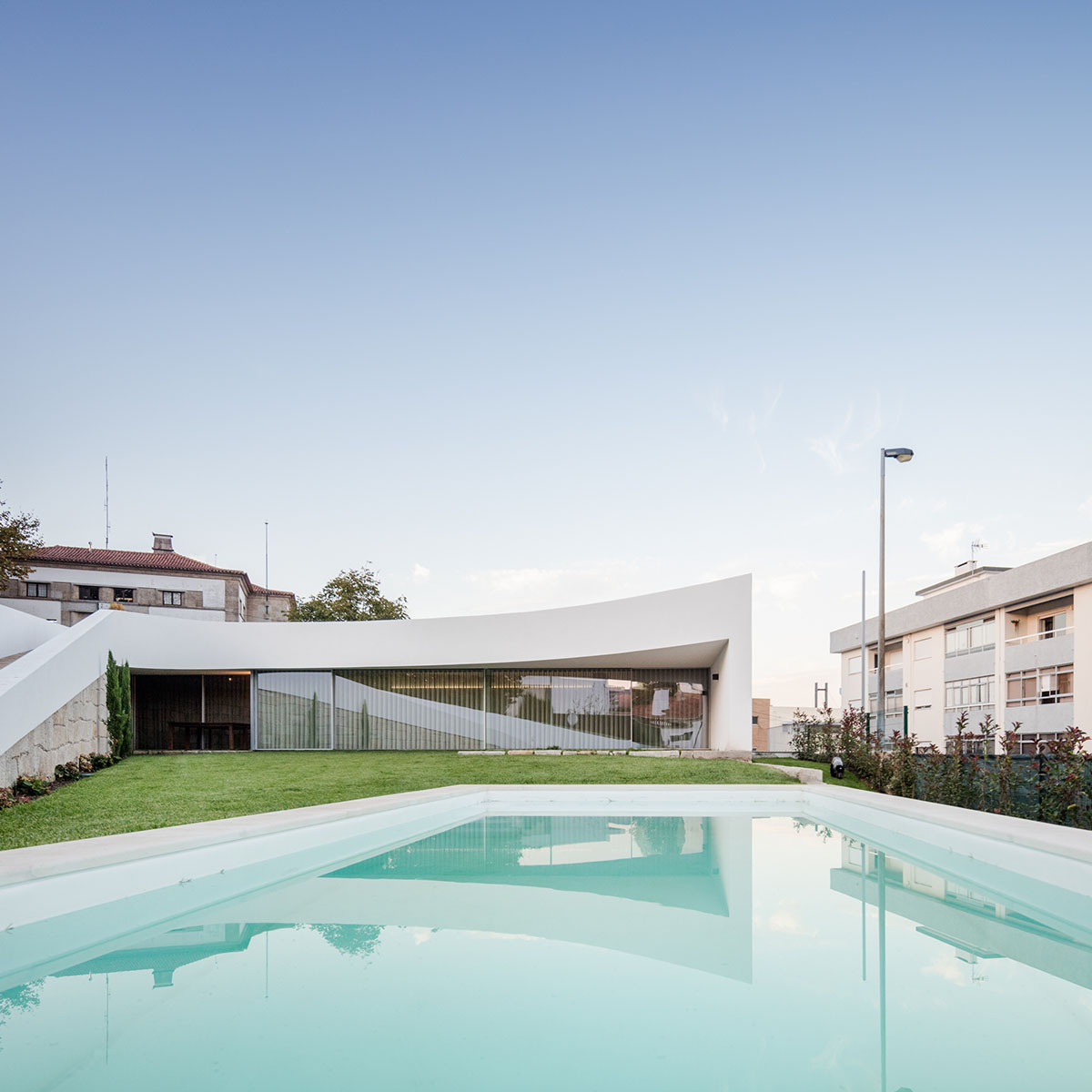
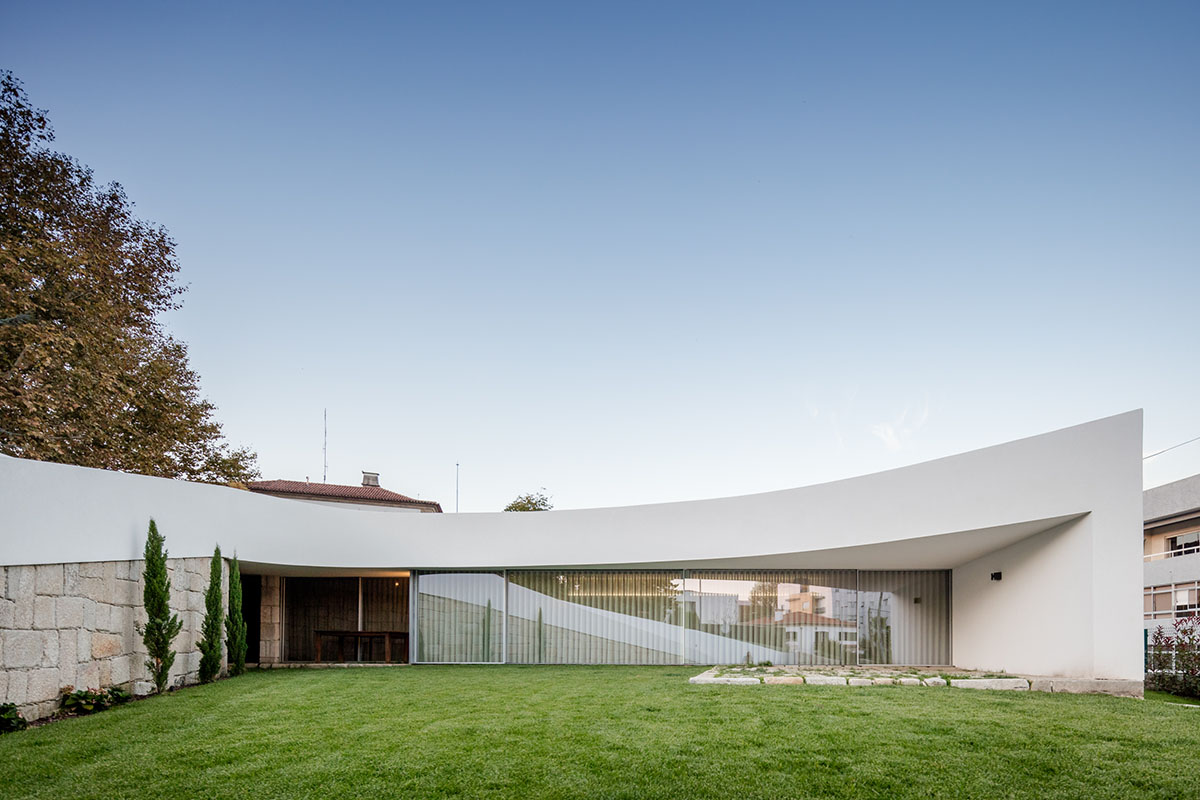
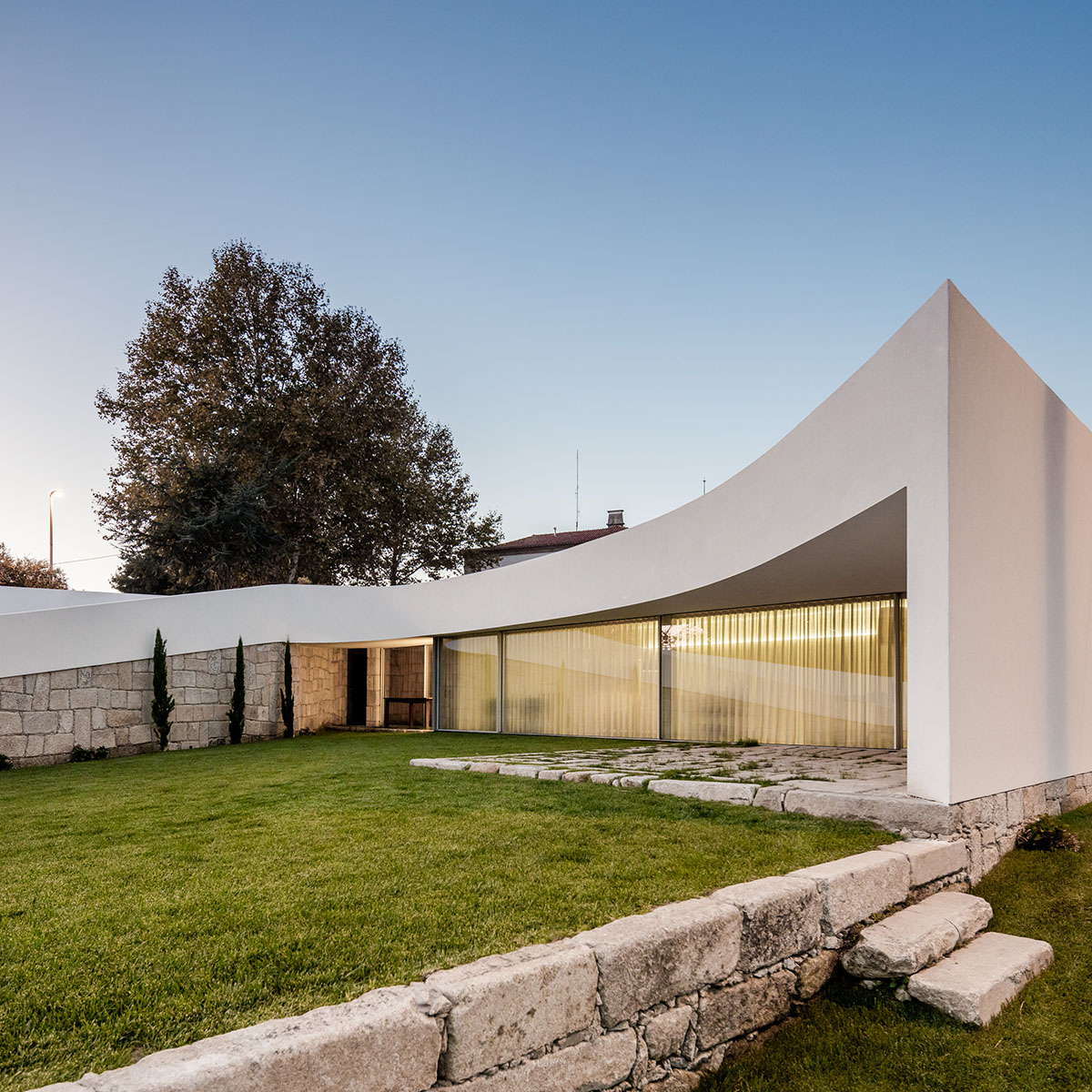
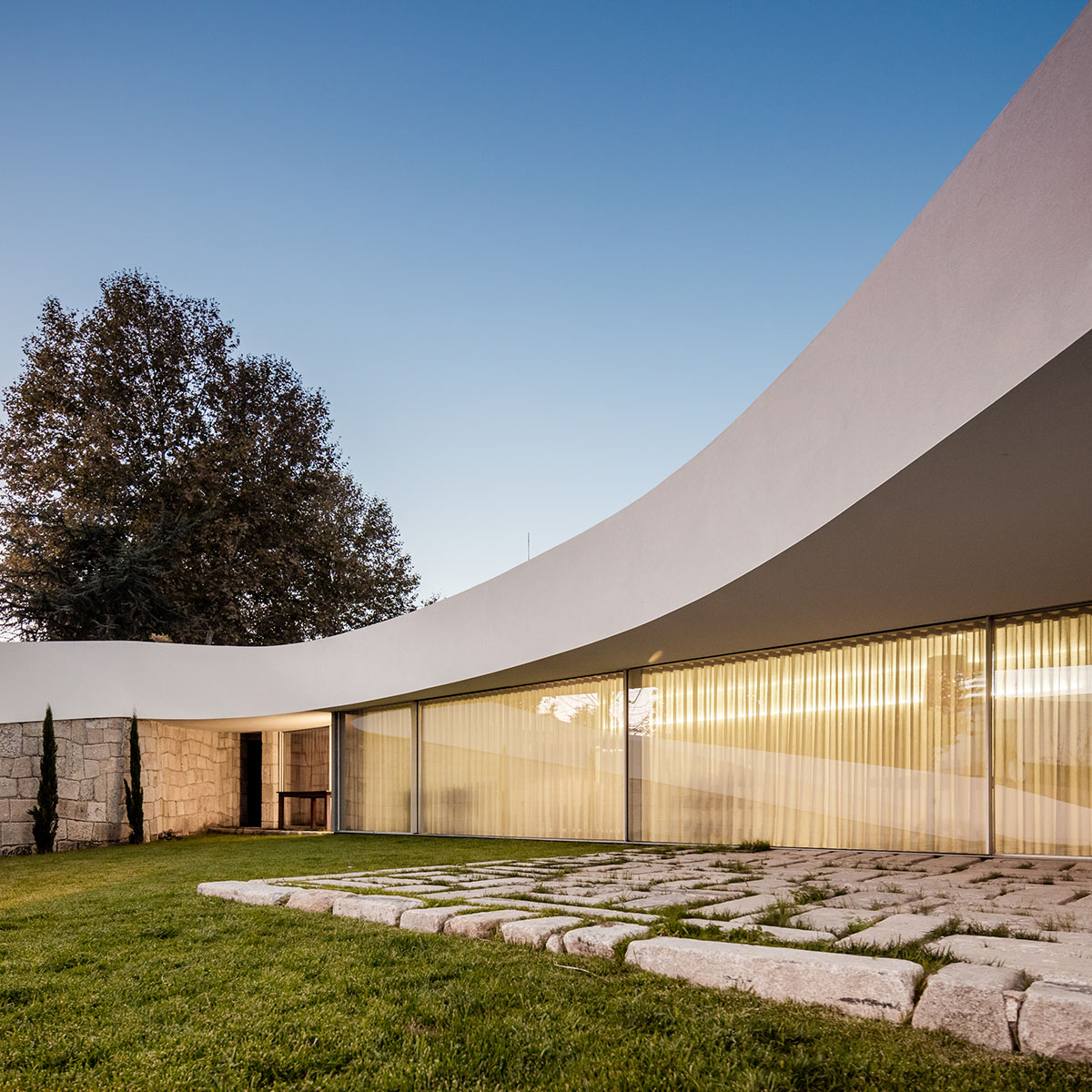

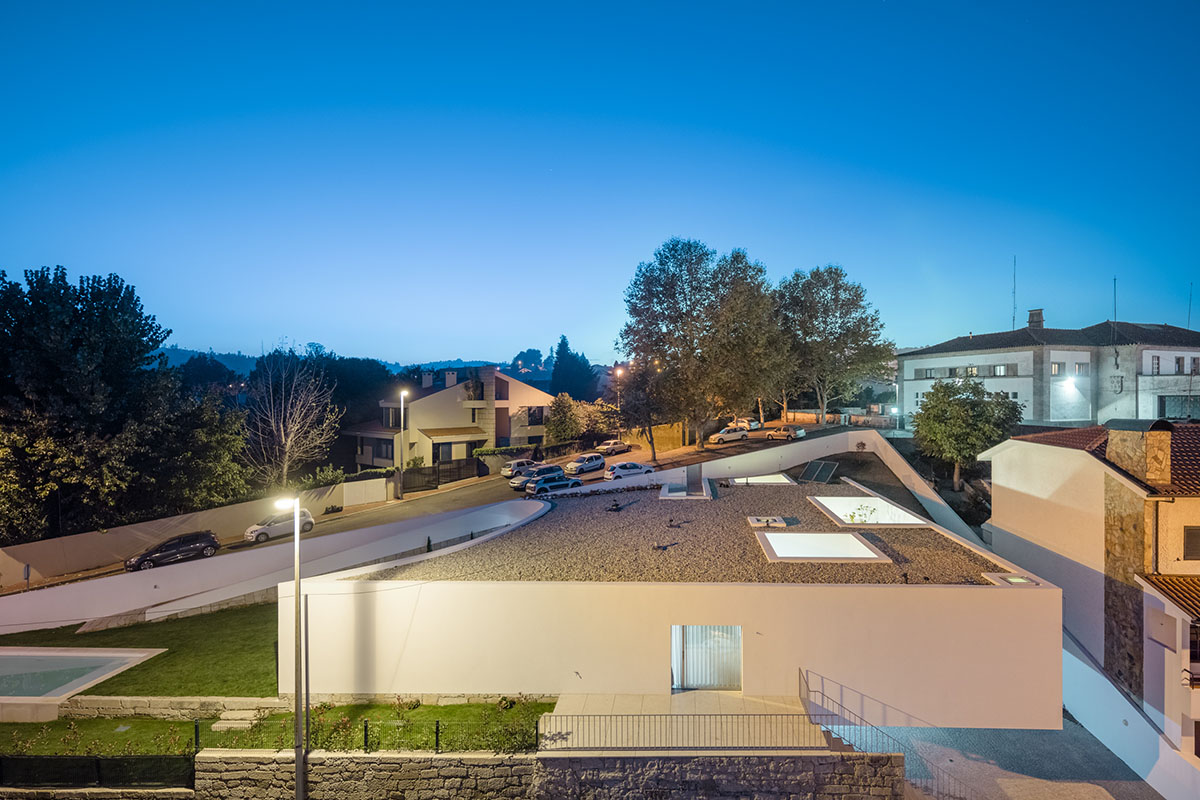

Ground floor plan
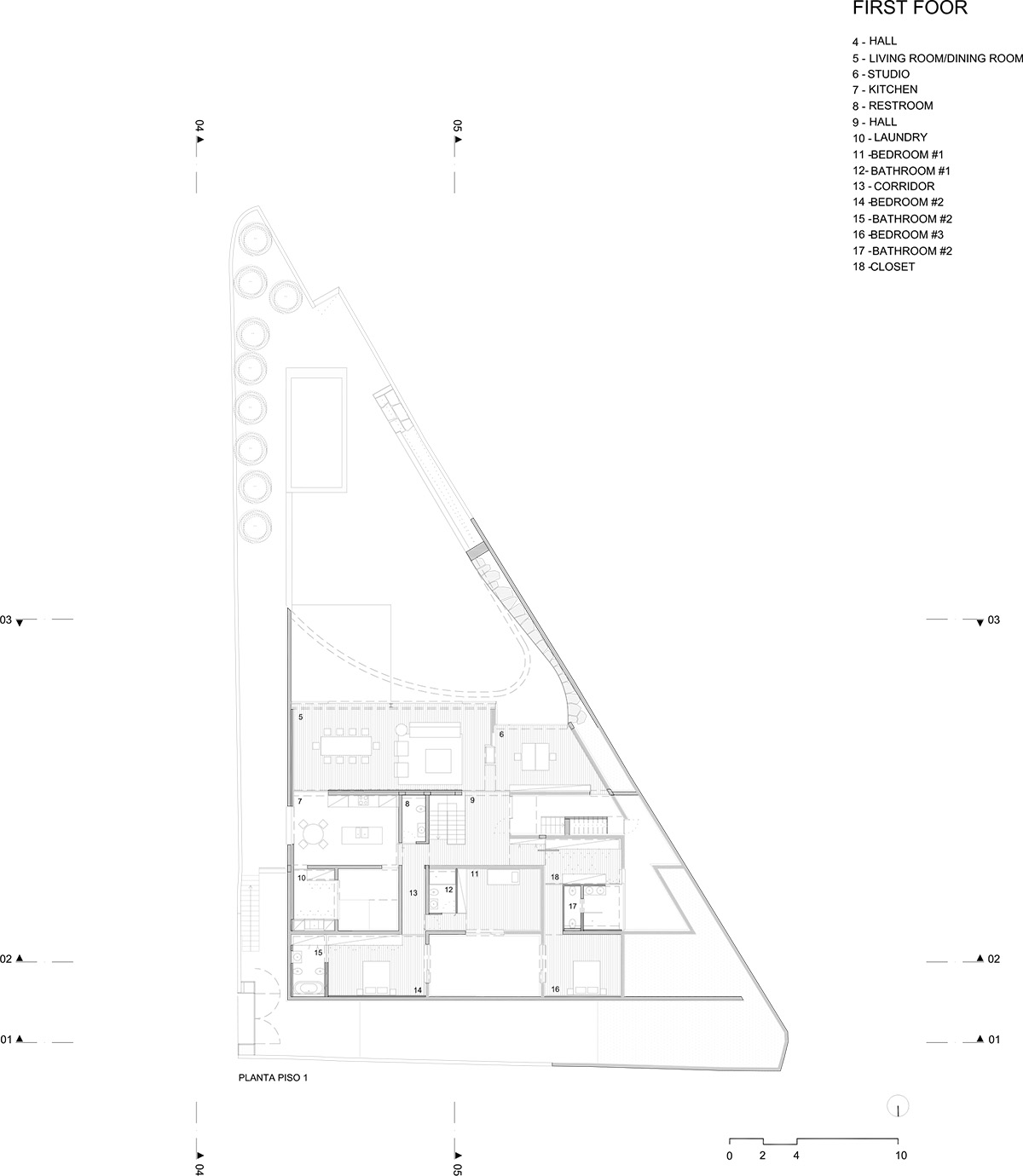
1st floor plan
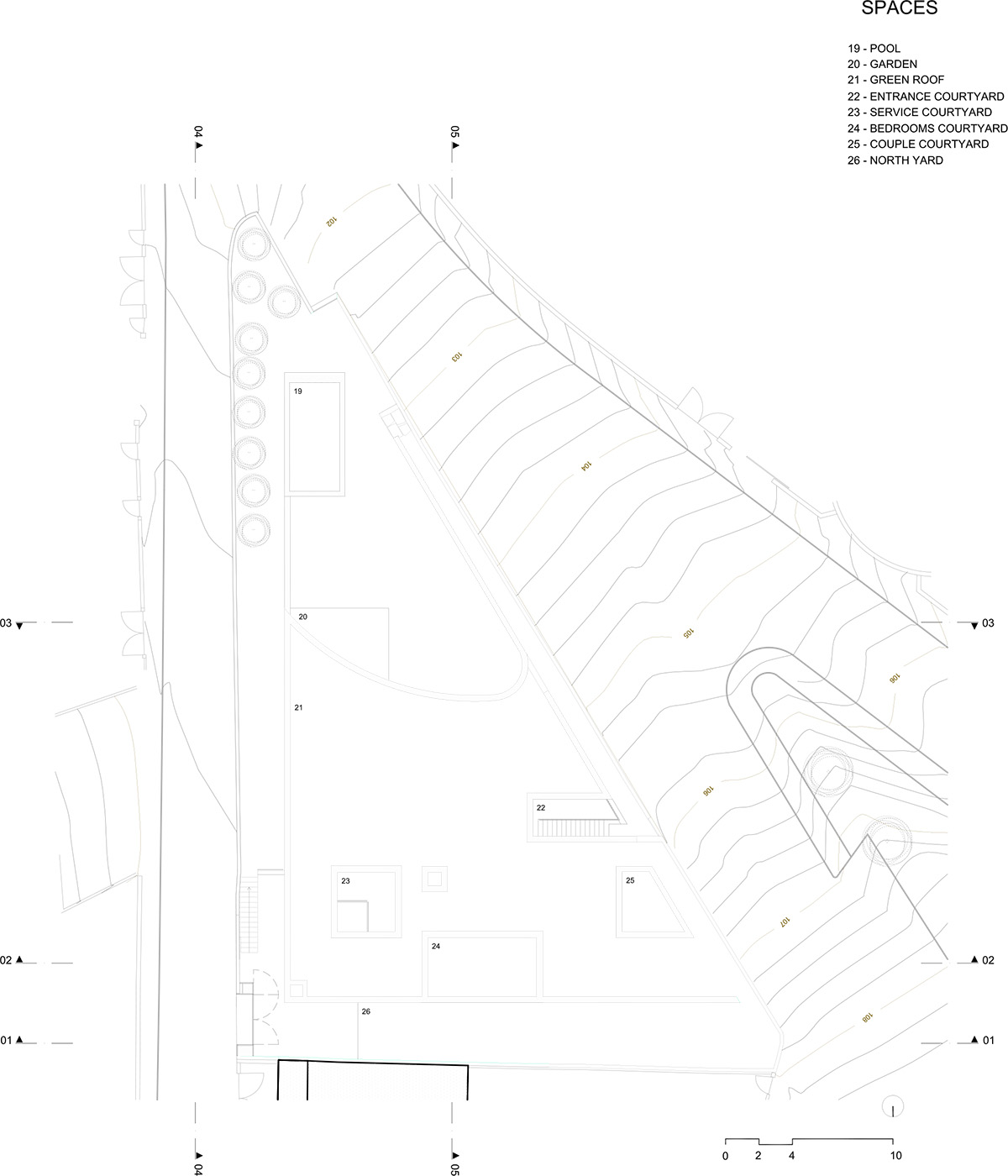
Roof floor plan
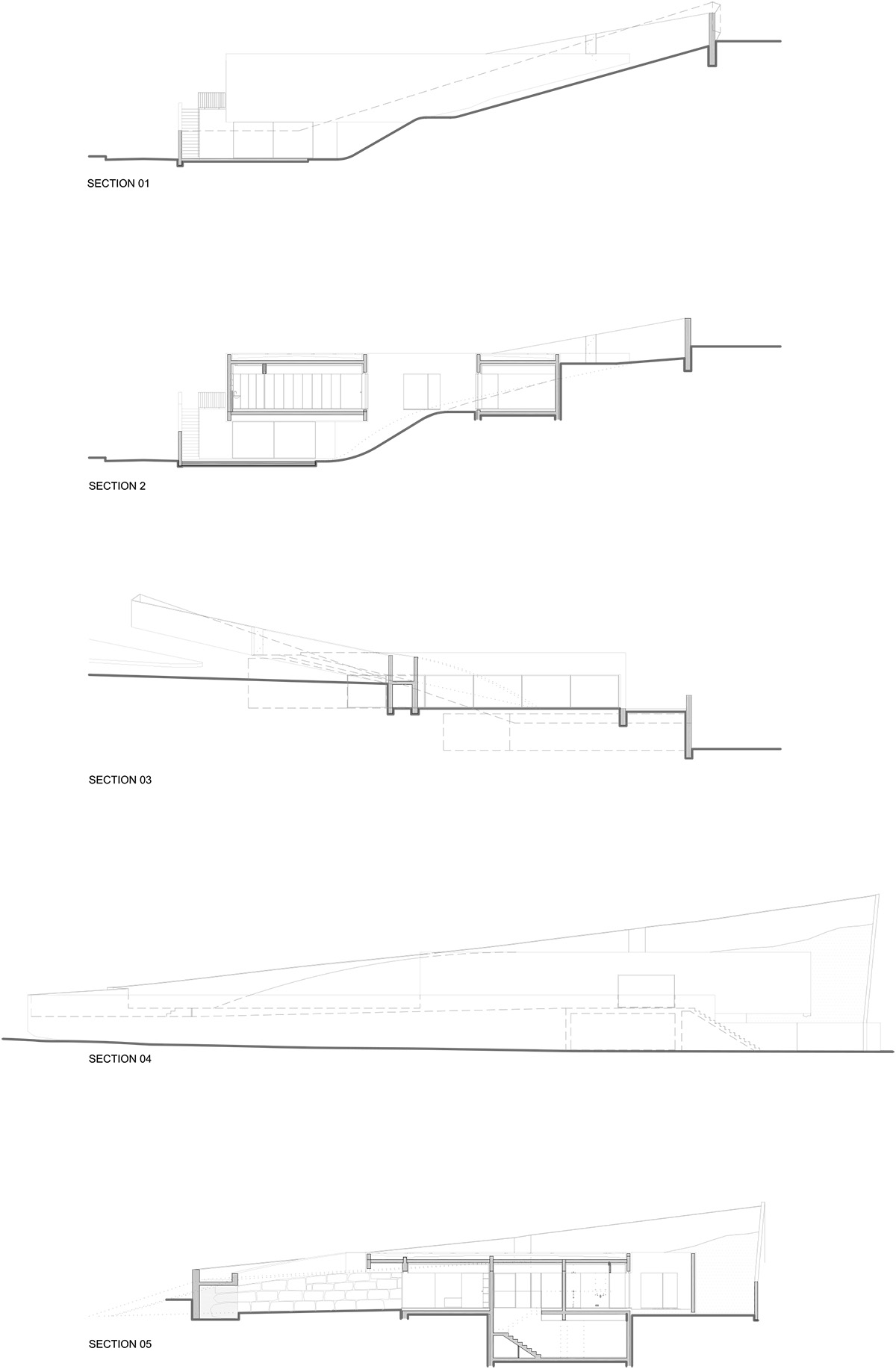
Sections
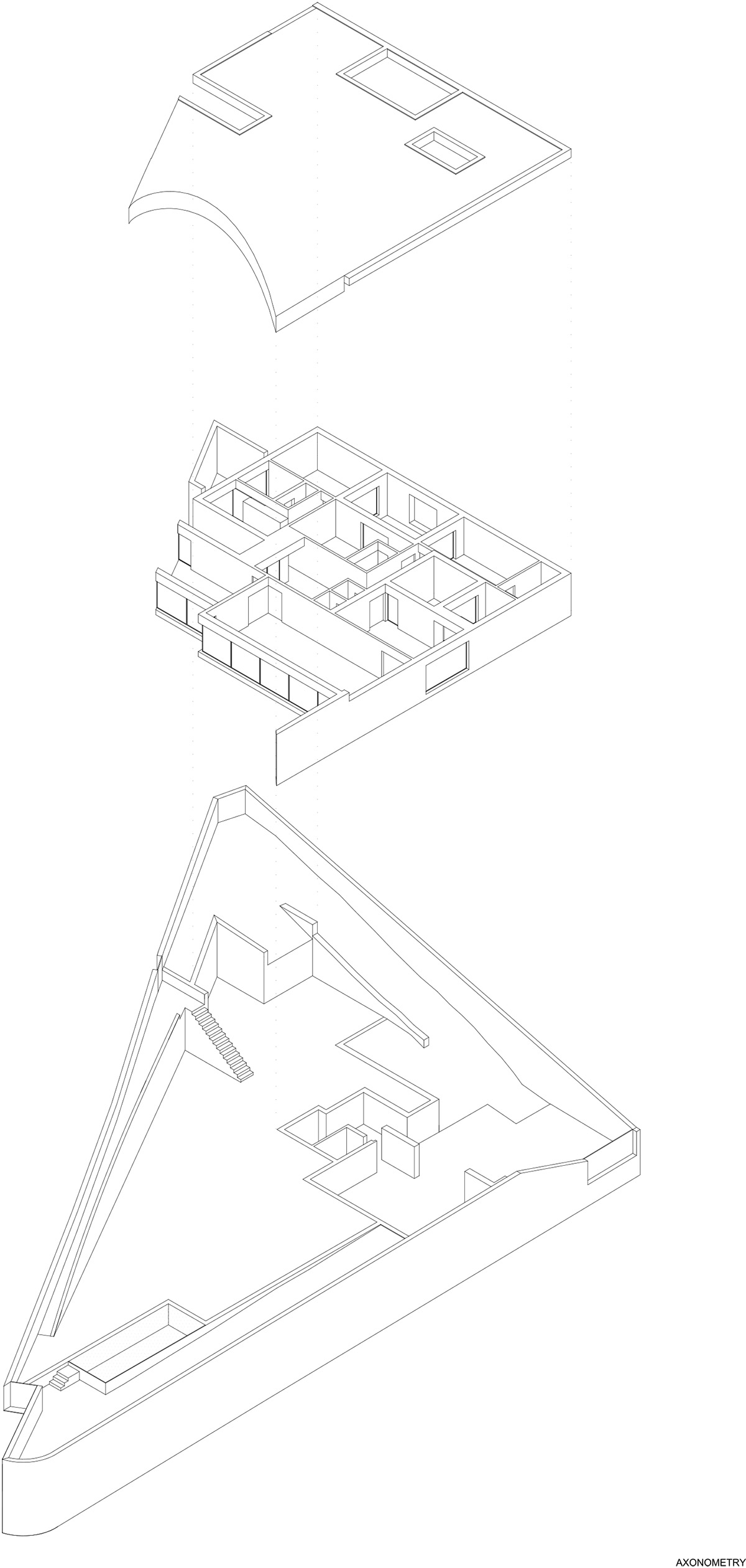
Axonometric diagram
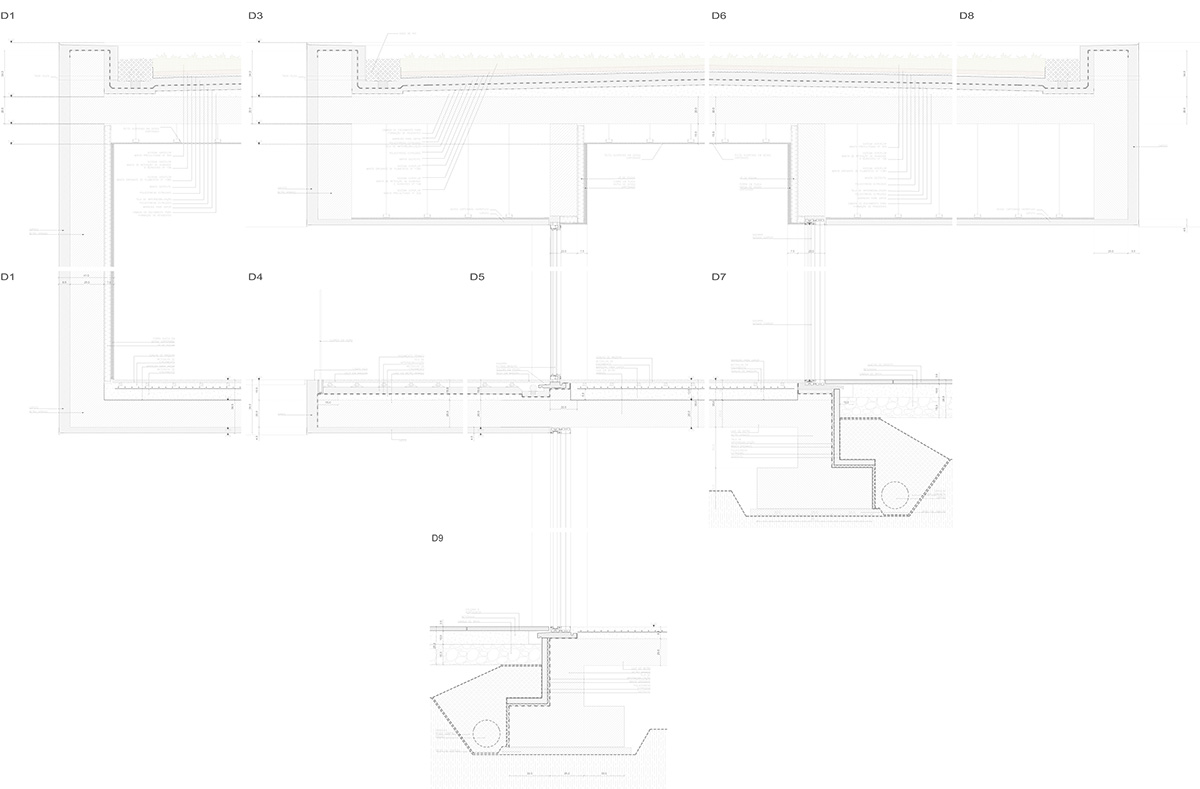
Detail
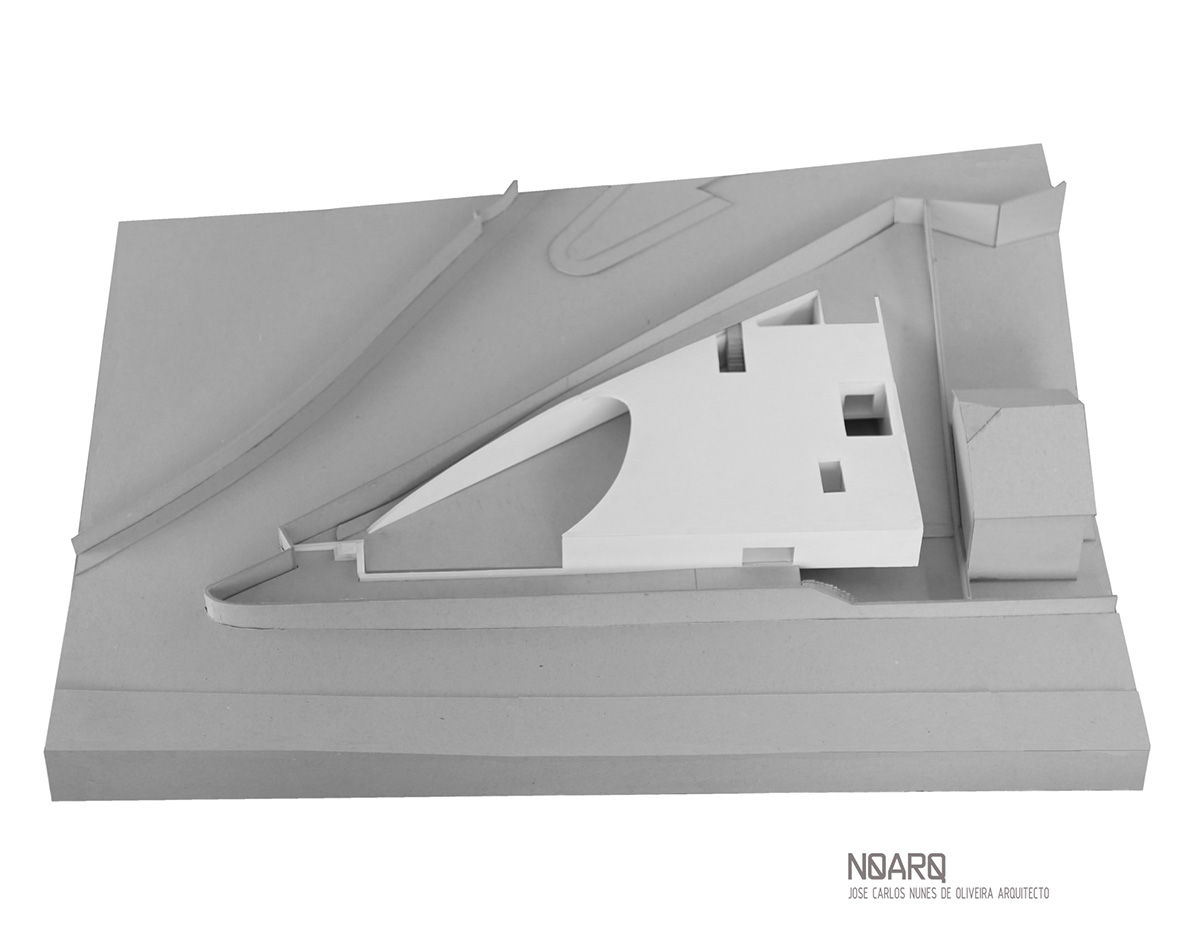
Model view
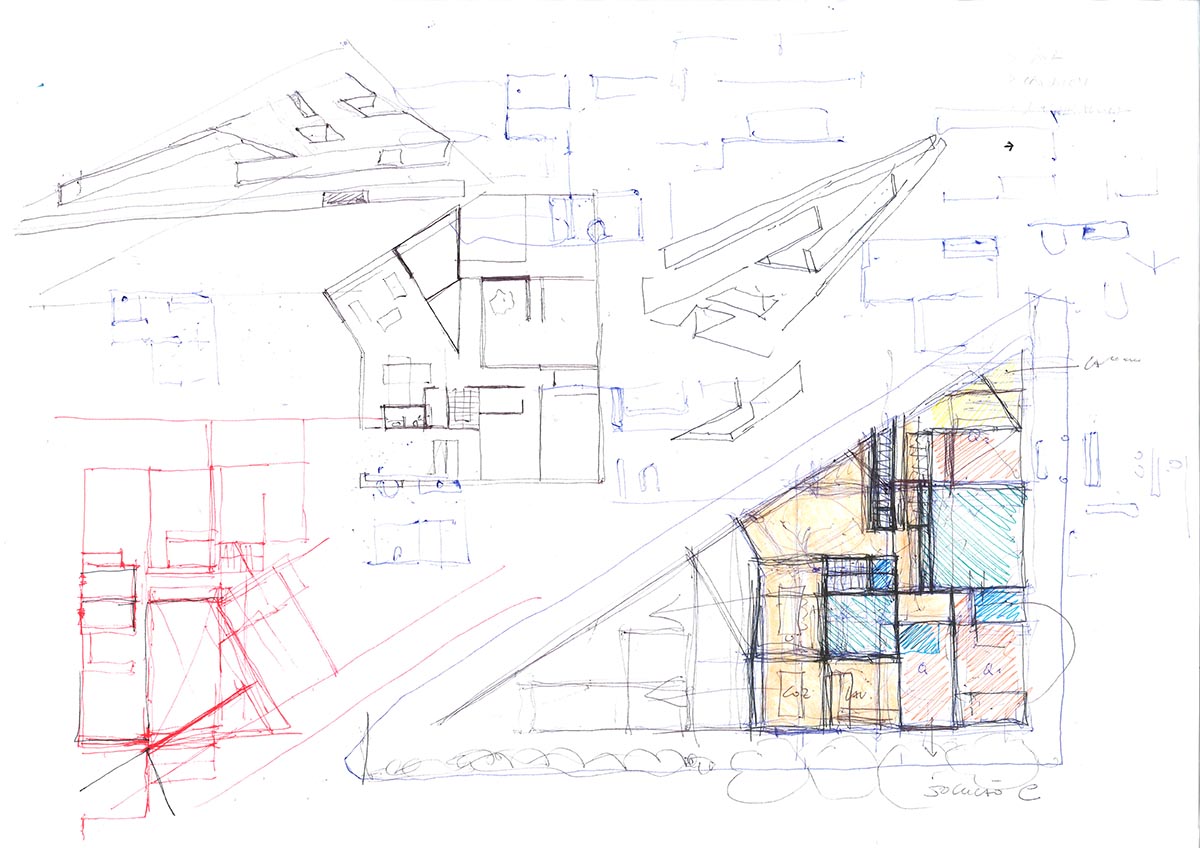
Initial sketch-1
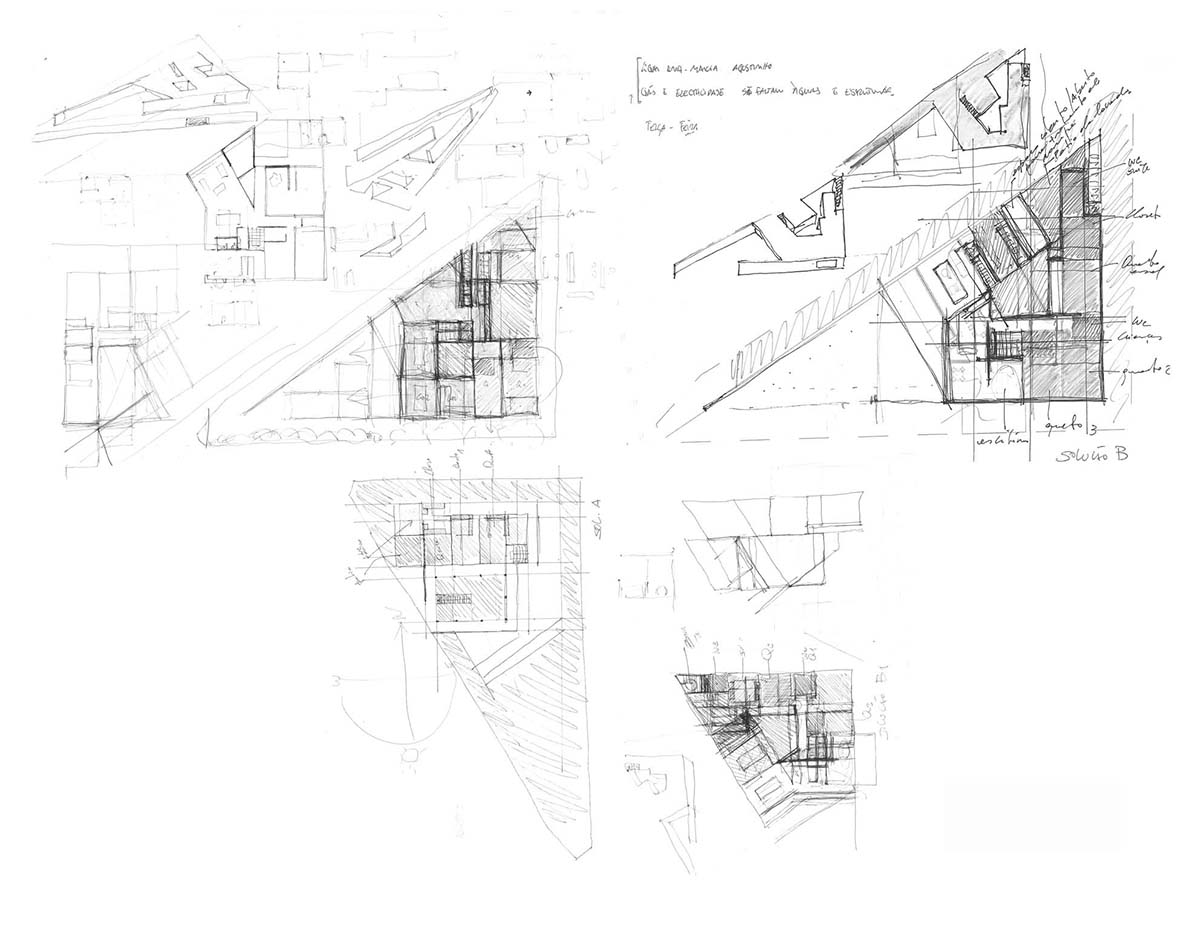
Initial sketch-2
NOARQ, led by José Carlos Nunes de Oliveira, produces different types of projects in Portugal and abroad since 2001. The architect is also Visiting Professor at March, Master in Architecture and Design, Universidad Europea de Valencia, since 2015, Oliveira has been invited to lecture and supervise workshops and architecture exhibitions at numerous Universities, both national and international.
Project facts
Project name: Casa ED&JO house
Location: V. N. Famalicão, Portugal
Dates: 2014-2017
Project: Habitação unifamiliar
Architecture: José Carlos Nunes de Oliveira/NOARQ
Coordination: Hugo Araújo (II), Joana Leite Pinto (I)
Collaborators: Daniel Viana
Client: ED & JO
Constructor: José M. Sampaio & Cª. Lda.
Specialities: Estruturas/Structures, Afonso Serra Neves, GEPEC – Sérgio Cunha
Hydraulic: GEPEC – Jorge Martins
Electricity, Telecommunications and Security: Artur Mesquita
Gas and Climatization: Luís Felipe da Silva Santos Azevedo, APRO ENGENHARIA – Ricardo Jorge Pereira Vasques
Topography: António Carlos Ferreira
Plot area: 940,80 m2
Volume: 1114 m³
All images © Joao Morgado
> via NOARQ
